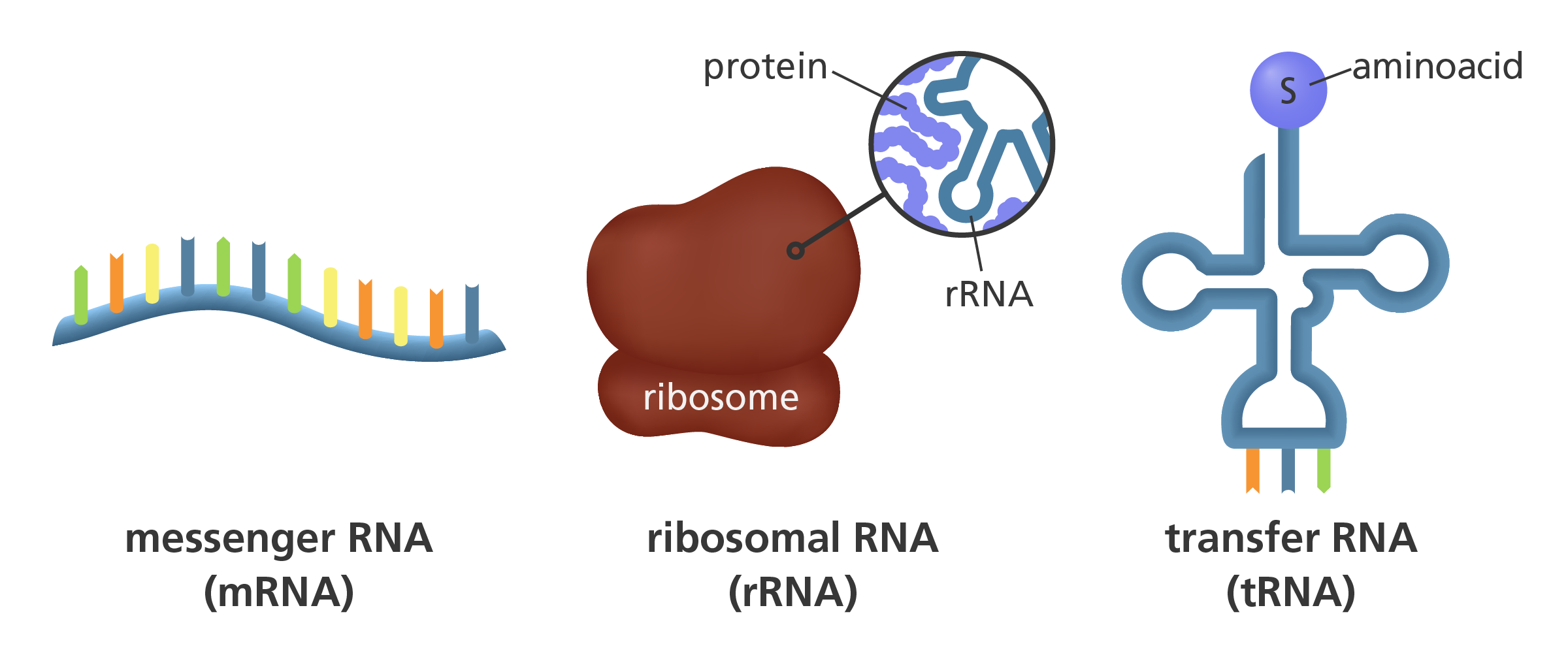Roles of mRNA, Ribosomes, and tRNA in Translation
- Translation is the process where the cell builds proteins by following instructions encoded in mRNA.
- This process involves three key players: mRNA, ribosomes, and tRNA.

Think of mRNA as the instruction manual, ribosomes as the assembly station, and tRNA as the delivery workers bringing the right parts (amino acids) to the station.
mRNA: The Messenger
- mRNA (messenger RNA) carries the genetic instructions from DNA to the ribosome.
- It is a single-stranded molecule composed of nucleotides, each containing one of four bases: adenine (A), uracil (U), cytosine (C), and guanine (G).
- Key Features of mRNA
- Codons: The mRNA sequence is read in groups of three bases called codons. Each codon specifies a particular amino acid or start/stop signal.
- Start codon: AUG (signals the beginning of translation)
- Stop codons: UAA, UAG, or UGA (signal the end of translation)
- Binding site: mRNA has a region where the small subunit of the ribosome binds to initiate translation.
- mRNA is temporary and unstable compared to DNA.
- It degrades after translation, ensuring proteins are produced only when needed.
Ribosomes: The Assembly Station
- Ribosomes are molecular machines that read the mRNA and synthesize proteins.
- They consist of two subunits: a small subunit and a large subunit.
mRNA binds to the Small Subunit of Ribosome
- Small Subunit: Binds to the mRNA and positions it for translation.
- Large Subunit: Contains three binding sites for tRNA:
- A Site (Aminoacyl site): Holds the tRNA carrying the next amino acid to be added.



